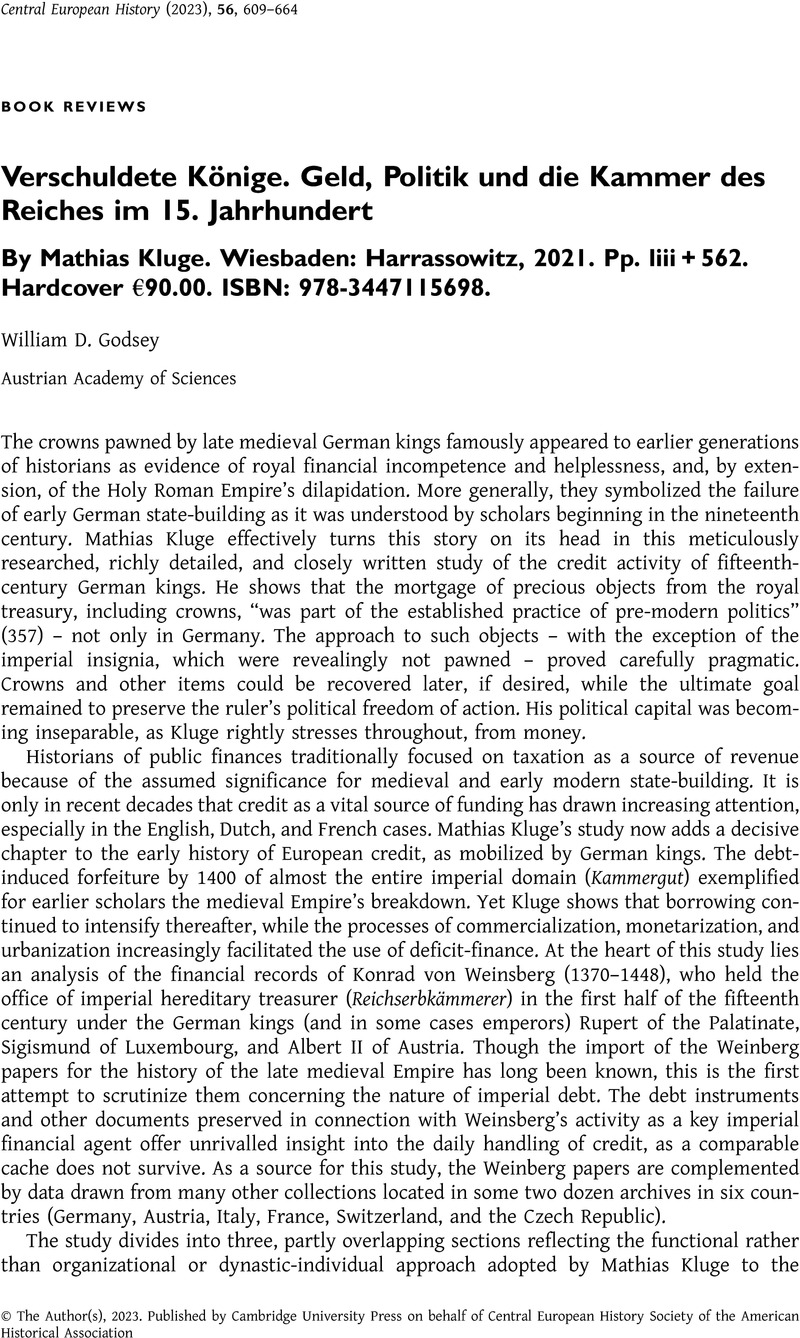No CrossRef data available.
Article contents
Verschuldete Könige. Geld, Politik und die Kammer des Reiches im 15. Jahrhundert By Mathias Kluge. Wiesbaden: Harrassowitz, 2021. Pp. liii + 562. Hardcover €90.00. ISBN: 978-3447115698.
Review products
Verschuldete Könige. Geld, Politik und die Kammer des Reiches im 15. Jahrhundert By Mathias Kluge. Wiesbaden: Harrassowitz, 2021. Pp. liii + 562. Hardcover €90.00. ISBN: 978-3447115698.
Published online by Cambridge University Press: 28 December 2023
Abstract
An abstract is not available for this content so a preview has been provided. Please use the Get access link above for information on how to access this content.

- Type
- Book Review
- Information
- Copyright
- Copyright © The Author(s), 2023. Published by Cambridge University Press on behalf of Central European History Society of the American Historical Association


